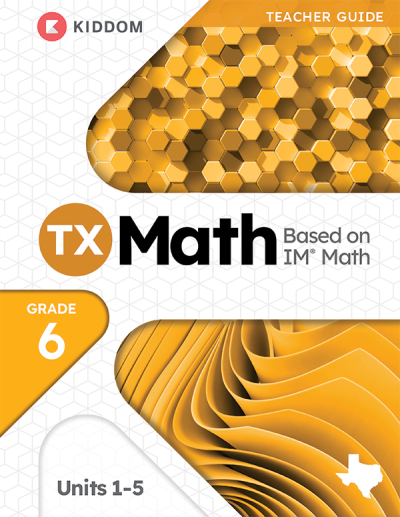Evaluation for 5.3c
Materials include supports for students in connecting, creating, defining, and explaining concrete and representational models to abstract (symbolic/numeric/algorithmic) concepts, as required by the TEKS.
Materials include supports for students in defining and explaining representational models to abstract (symbolic/numeric/algorithmic) concepts, as required by the TEKS. In grade 6, Unit 2 Lesson 5, "5.3: Drawing Diagrams to Show Equal-sized Groups," the materials include supports for students in defining and explaining representational models to abstract concepts of multiplication and division. For example, the materials include teacher instructions such as "Invite each group to present the solution on their visual display. Ask the rest of the class to think about two things: whether the equations make sense, and how the presented diagram shows the number of groups, the size of each group, and the total amount. Doing so will help students see the structure of the problems in the equations and diagrams." Materials include supports for students in connecting, creating, defining, and explaining representational models to abstract (symbolic/numeric/algorithmic) concepts, as required by the TEKS. For example, the students connect, create, define, and explain representational models to abstract concepts during the Activity Synthesis within grade 6, Unit 2, Lesson 10, "Activity 10.3: Dividing by Non-Unit Fractions" as students work with tape diagrams for fractional division. Materials include supports for students in connecting, creating, defining, and explaining concrete and representational models to abstract (symbolic/numeric/algorithmic) concepts, as required by the TEKS. In grade 6, Unit 2, Lesson 4, "4.2: Reasoning with Pattern Blocks," the materials include supports for students in connecting the concrete models using pattern blocks to the abstract concepts of multiplication and division. "Students start by using pattern blocks to represent multiplication of a whole number and a fraction. For example, if a hexagon represents 1 and six triangles make a hexagon, then each triangle represents 1/6, which is the same as 1÷6. They can then use six triangles to represent 6 x 1/6 = 1 or 6 x 1÷6 = 1. Later, students use the blocks to reason in the opposite direction, answering questions such as, "How many 1/2s are in 4?" These kinds of questions serve as a stepping stone to more abstract questions such as, "What is 4 divided by 1/2?'"



